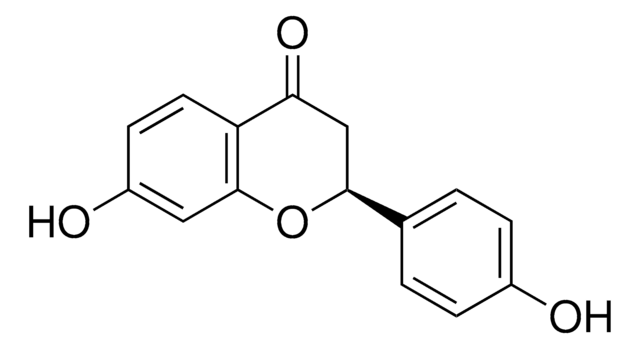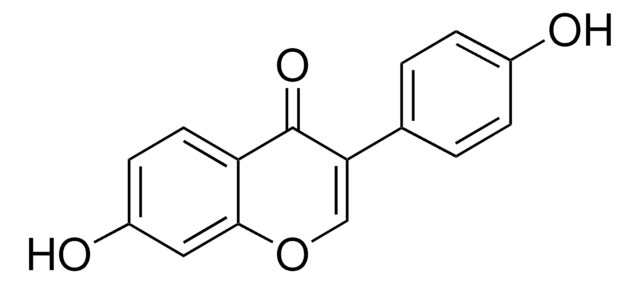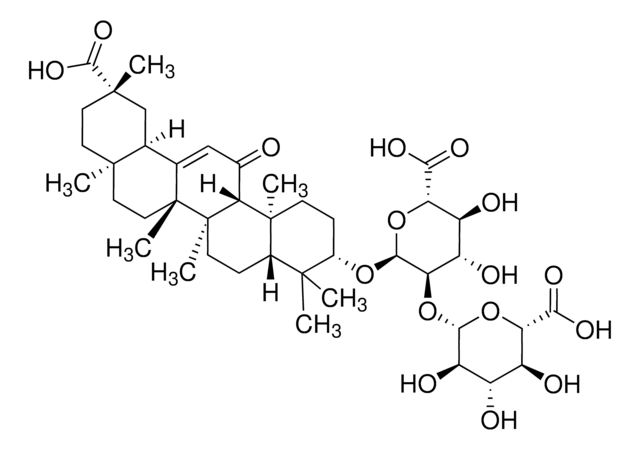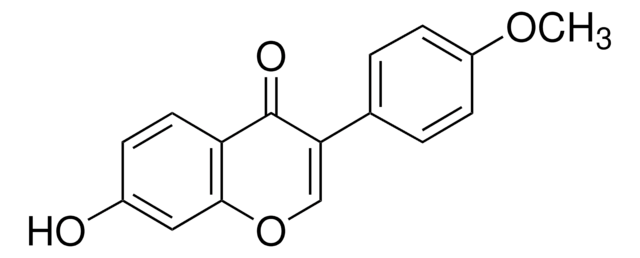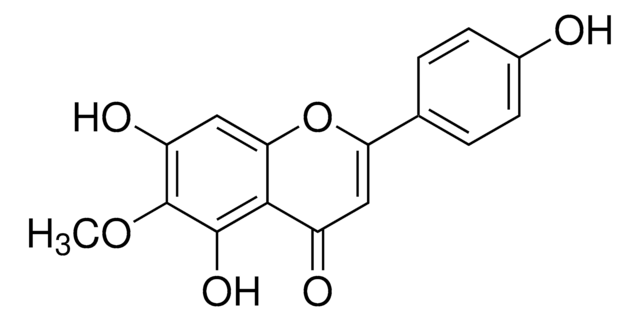Key Documents
78825
Liquiritigenin
≥97.0% (HPLC)
Synonim(y):
7,4′-Dihydroxyflavanone, 7-Hydroxy-2-(4-hydroxyphenyl)-2,3-dihydro-4H-1-benzopyran-4-one
About This Item
Polecane produkty
Poziom jakości
Próba
≥97.0% (HPLC)
Postać
powder or crystals
zanieczyszczenia
≤7% water
Zastosowanie
metabolomics
vitamins, nutraceuticals, and natural products
ciąg SMILES
Oc1ccc(cc1)[C@@H]2CC(=O)c3ccc(O)cc3O2
InChI
1S/C15H12O4/c16-10-3-1-9(2-4-10)14-8-13(18)12-6-5-11(17)7-15(12)19-14/h1-7,14,16-17H,8H2/t14-/m0/s1
Klucz InChI
FURUXTVZLHCCNA-AWEZNQCLSA-N
Opis ogólny
Zastosowanie
- to study its inhibitory effect on tumor metastasis in the treatment of colorectal cancer
- as a reference standard for ultra-performance liquid chromatography (UPLC) of Chaihu-Shugan-San (CSS) extract
- as a potential antiviral drug against hepatitis C virus (HCV) infection
Działania biochem./fizjol.
Opakowanie
Kod klasy składowania
11 - Combustible Solids
Klasa zagrożenia wodnego (WGK)
WGK 3
Temperatura zapłonu (°F)
Not applicable
Temperatura zapłonu (°C)
Not applicable
Certyfikaty analizy (CoA)
Poszukaj Certyfikaty analizy (CoA), wpisując numer partii/serii produktów. Numery serii i partii można znaleźć na etykiecie produktu po słowach „seria” lub „partia”.
Masz już ten produkt?
Dokumenty związane z niedawno zakupionymi produktami zostały zamieszczone w Bibliotece dokumentów.
Klienci oglądali również te produkty
Nasz zespół naukowców ma doświadczenie we wszystkich obszarach badań, w tym w naukach przyrodniczych, materiałoznawstwie, syntezie chemicznej, chromatografii, analityce i wielu innych dziedzinach.
Skontaktuj się z zespołem ds. pomocy technicznej